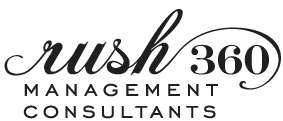Evaluate the culture change underway in healthcare.
Think about the last time the leadership at your company announced a big change. Did you get onboard the first time you heard the presentation or did you have reservations? Most people have reservations especially if they haven’t been involved in understanding the issues and formulating the strategy supporting the change.
Many in the healthcare industry understand that the cost of care is increasing faster than the economy can support and that we need to be part of the solution. The challenge is that no one has had a clear picture of the future or a clear understanding of how it will impact them. Consequently, many have felt the same reservation as when a company tries to undergoes a culture change.
Complicating the Culture Change
Complicating the culture change required to support Accountable Care are past failures to integrate the healthcare system and sustain health maintenance organizations (HMOs). Many HMOs were not financially viable over the long term which makes many professionals wonder what is different this time. However, it is becoming more clear with the policy changes rolled out with the health exchanges.
The main difference are the incentives and penalties that are impacting everyone one way or another. There are only two levers left for insurers to play with to make coverage affordable. The two levers are the deductible and the out-of-pocket maximum. If insurance remains a requirement for all Americans, there will be more and more pressure on the healthcare system to figure out how to get the broader population to live healthier and to provide cheaper care.
The stages of a culture change make it easier to see the process underway towards achieving healthcare consumerism.
Stages of Culture Change
1/ Getting Started
Change starts with establishing new behaviors. The Affordable Care Act gave the industry the incentives needed to start changing how providers work. Gone, in large part, are the paper charts. Most providers are using an information system referred to as an electronic medical record to capture and share medical information.
People outside of the industry probably forget what it was like when their industry first automated because it has been so long. I remember the first applications that we adopted for work paper documentation in public accounting and internal audit. We had similar gripes and issues with those systems as the providers have with the systems that are being implemented now. They slowed us down because they were difficult navigate and use. Given our tight deadlines, many opted to continue on paper rather than take the time needed to master the new flow.
The difference in healthcare is that most providers don’t have a choice. The penalties for not using an electronic medical record are too punitive for the organization so clinicians have to persevere and master the new workflows or persuade someone to replace the system.
2/ Making Progress
Progress makes people happy. It is hard to measure the mood of an industry but happy might be a stretch at this point. There seems to be more of an acceptance for the new methods and processes of documentation. Clinicians are finding ways to deal with the negative affect on their time at least in the short run while the rest of us scramble to develop solutions that make it easier for them to get their job done and provide meaningful insights about patient populations.
The other factor contributing to our progress as an industry is the constant messaging from our political leaders about the importance and need to achieve affordable care. That constant messaging is in essence teaching us a new language. Words like value, accountable care, lean, electronic medical records, health information, big data are becoming part of our everyday language. The mindset of healthcare consumerism is reinforced as more people learn the language and use it in their every day conversations.
3/ Earning Support
When you tell people your goal and they can see your commitment you will get the support needed to achieve it. I can honestly say that having people rally around you in support of your goal is one of the most inspiring and rewarding experiences that I have ever felt. How this level of support manifests in the industry is yet to be determined. However, it all has to start with the individual whether you want to refer to them as a patient or a healthcare consumer.
The patient engagement systems that reward individuals for healthy behavior offer potential. The systems now are essentially rewarding and encouraging healthy people for doing what they already find personally rewarding. To really impact the cost of care we have to figure out how to engage the people that would benefit the most and get them on the path to healthy living. While we might be looking for the “silver bullet” as we routinely do when faced with a big challenge the solution is probably multifaceted. Whatever the right solution is for the individual, healthcare providers are in the best position to keep their patients engaged in the journey that will reward us all.
“Change is hard because people overestimate the value of what they have—and underestimate the value of what they may gain by giving that up.”
James Belasco and Ralph Stayer
Flight of the Buffalo (1994)
